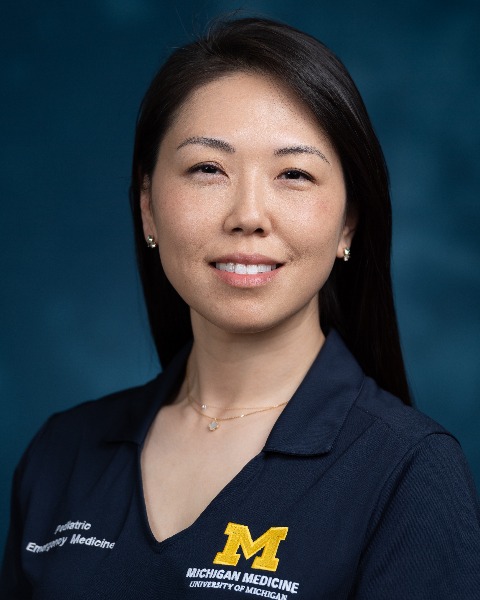Emergency Medicine: All Areas
Emergency Medicine 7
365 - Quantifying Trainee Cognitive Load during Simulated Pediatric Resuscitation
Saturday, April 29, 2023
3:30 PM - 6:00 PM ET
Poster Number: 365
Publication Number: 365.211
Publication Number: 365.211
Jan D. Chang, University of Michigan Medical School, Ann Arbor, MI, United States; Prashant Mahajan, University of Michigan Medical School, Ann Arbor, MI, United States; Vitaliy Popov, University of Michigan Medical School, Ann Arbor, MI, United States

Jan D. Chang, MD (she/her/hers)
Pediatric Emergency Medicine Fellow
University of Michigan Medical School
Ann Arbor, Michigan, United States
Presenting Author(s)
Background: Human working memory (WM), which is the amount of information used in execution of cognitive tasks is limited and can get easily overwhelmed in high-stress situations such as pediatric resuscitation where providers are required to make multiple complex decisions. Using simulated resuscitation scenarios is an opportunity to quantify trainee cognitive load (CL) and possibly develop interventions to reduce CL to improve provider wellbeing.
Objective: Use mixed methods to measure objective CL and perceived (subjective) CL in pediatric resuscitation simulation scenarios.
Design/Methods: Emergency medicine trainees participated in a standardized pediatric resuscitation scenario. A wrist-worn wearable device (Empatica4 band) capable of continuously collecting electrical dermal activity (EDA) was used to measure objective CL. Objective CL has an EDA range from 0-1 with values towards 1 suggestive of high objective CL. An 8-item validated survey was used to measure subjective CL. The scale ranged from 1-5, with values towards 5 suggestive of high subjective CL. We present the results using descriptive statistics.
Results: To-date, six emergency medicine trainees have participated in the resuscitation scenarios. For objective CL, after data processing and normalization, the mean total peak amplitudes among the 6 participants were 0.56 (SD=0.22) and mean number of EDA peaks was 31.2 (SD=10.9). The mean subjective CL responses was 2.56 (SD=0.53) on the five-point Likert scale. Both objective and subjective CLs were consistent with each other suggestive of the activity being challenging but not overwhelming.
Conclusion(s): We demonstrate the ability to measure cognitive load among trainees exposed to a simulated high stress situation. Our data suggests that use of an objective measures for CL can potentially replace the need for subjective measures of CL. Future work could focus of measuring provider cognitive load during real time clinical care and initiating mitigation measures to reduce provider burnout.
